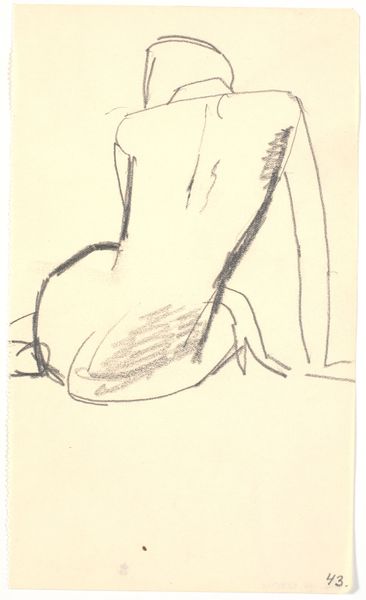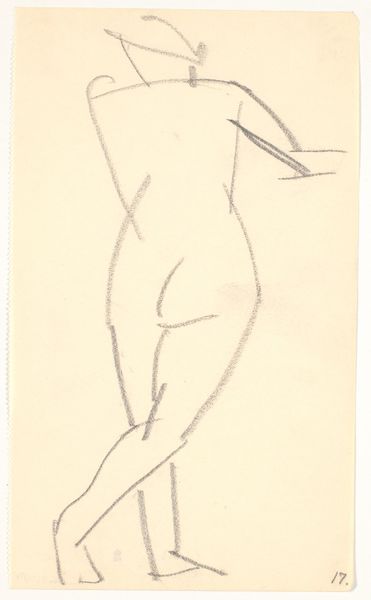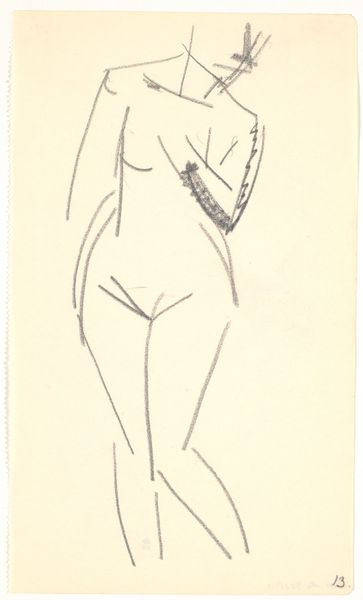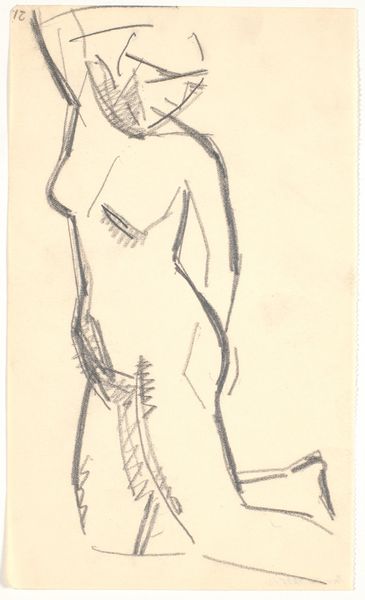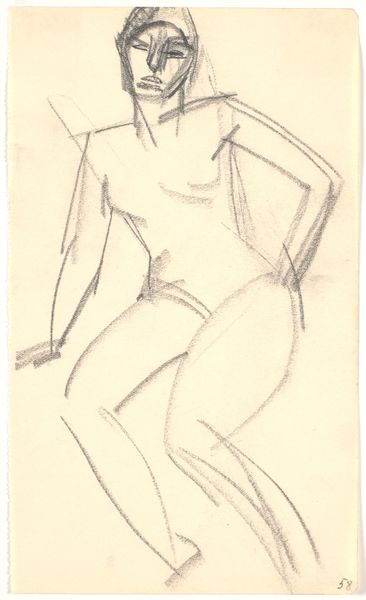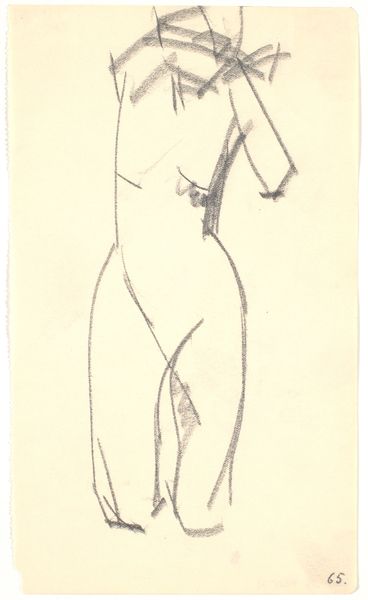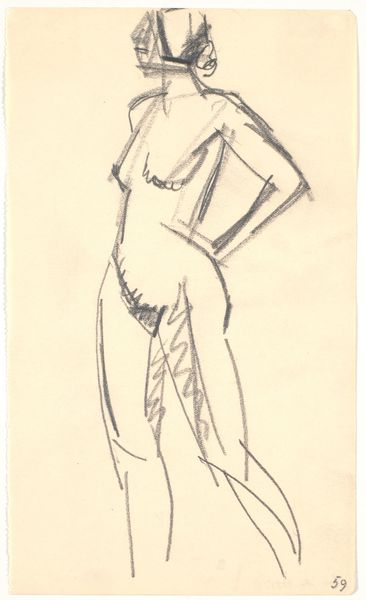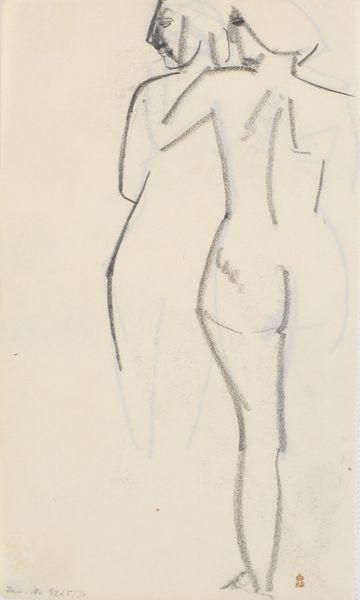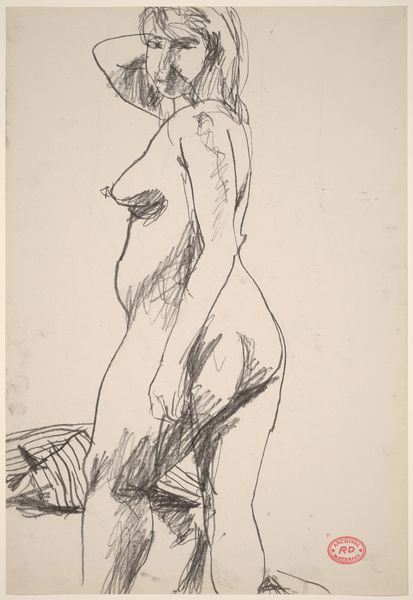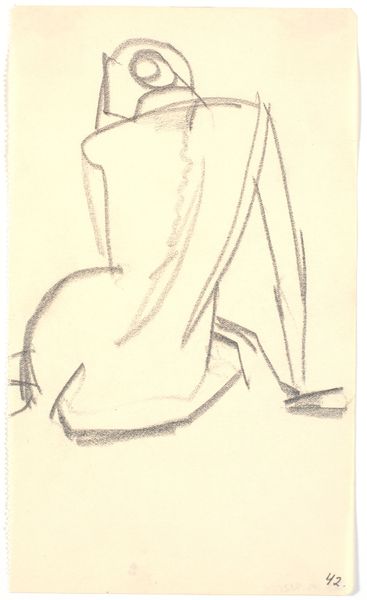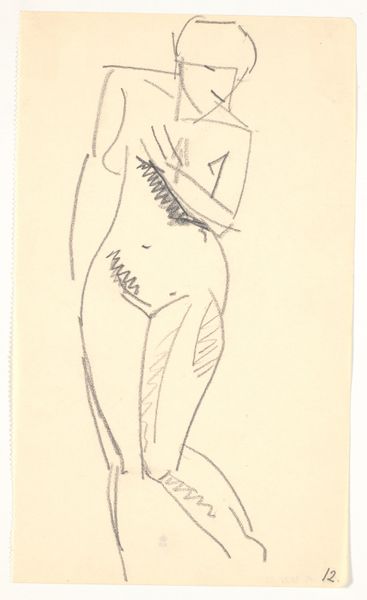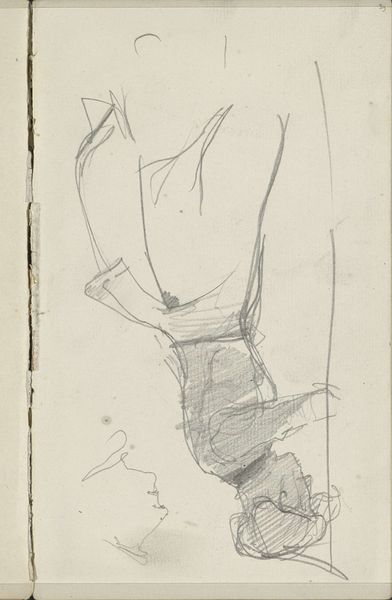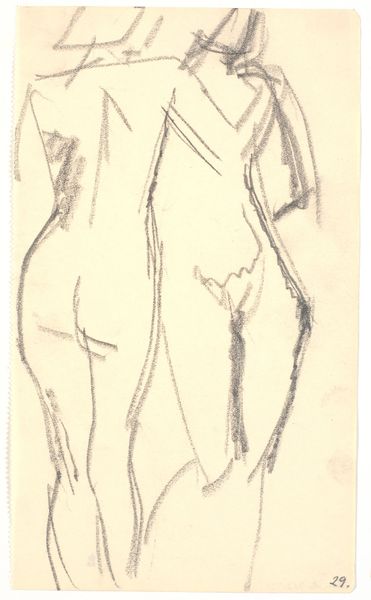
drawing, pencil
#
drawing
#
figuration
#
pencil
#
modernism
Dimensions: 209 mm (height) x 124 mm (width) (bladmaal)
Editor: This is "Siddende model," a pencil drawing from 1914-1915 by Karl Isakson. The figure is nude and hunched over, almost as if in a state of despair. It looks more like an exploration of form and shadow than a traditional portrait. What stands out to you about it? Curator: The drawing strikes me as a potent depiction of the female form burdened by societal pressures. Given that this piece was created during a period marked by the rise of feminism, I think we can interpret this as a reflection on the limited agency afforded to women in the early 20th century. The downward gaze, the slumped posture...do you see how these choices contribute to the feeling of resignation? Editor: Yes, the posture is really telling. It does convey a sense of weariness, almost like she is shielding herself from the world. Curator: Exactly. And consider the economic realities for many women at this time. Was there truly any chance of real independence? There’s an intersection of gender and class here. Do you think Isakson is portraying an individual woman, or a more universal experience? Editor: That's a good question. The lack of detail in her face makes it feel more universal. It’s like she could represent any woman struggling against the constraints of her time. Curator: I agree. By stripping away individuality, Isakson amplifies the collective experience of women facing systemic oppression. It's not just a drawing, it's a statement on societal inequalities. Editor: It’s amazing how much can be conveyed through such a simple sketch. Curator: It demonstrates the power of art to act as a mirror, reflecting uncomfortable truths and prompting essential conversations. Editor: Definitely gives me a lot to consider moving forward. Thanks for sharing!
Comments
No comments
Be the first to comment and join the conversation on the ultimate creative platform.
